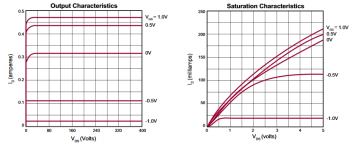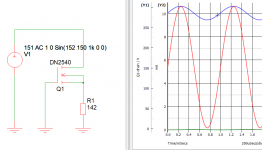It would be helpful if you provide an alternative design that works better, according to your criteria.
A 200 Ohm resistor as Rset between Source and Load yields 10mA current sink. As I demonstrated above, the noise is a fraction of the LM334 and temperature dependence is de minimus.
DMOS are quite variable so one has to use a potentiometer for the correct Vgs(t) to arrive at the correct value. SY first pointed this out in his articles "Impasse" and "His Master's Noise". Nothing original to me!
Walt Jung, in response to communications re his AX articles "Sources Part II" agreed that these active devices, while benefitting impedance, resulted in much higher noise.
The original circuit can not work.
The DN2540 needs only -1.2V at the gate to sink 10mA. LM334 needs 1.1V typ to sink 10mA. these are typical values the FET might only need -0.85V.
no headroom left.
But when you replace the LM334 with an adjustable 150 ohm resistor you have a stable sink with maximum compliance and minimum noise and cost.

The DN2540 needs only -1.2V at the gate to sink 10mA. LM334 needs 1.1V typ to sink 10mA. these are typical values the FET might only need -0.85V.
no headroom left.
But when you replace the LM334 with an adjustable 150 ohm resistor you have a stable sink with maximum compliance and minimum noise and cost.

Last edited:
Yes you have , but the IC is not regulating nothing ? Just sitting like a resistor 😀
The IC is the current source here , the mosfet is just for dropping the extra hundreds of volts so the max 40V LM334 would work safely . Sorry if you thought the mosfet has the prime role here 😉
1 transistor CCS has much smaller impedance
The IC is the current source here , the mosfet is just for dropping the extra hundreds of volts so the max 40V LM334 would work safely . Sorry if you thought the mosfet has the prime role here 😉
1 transistor CCS has much smaller impedance
Last edited:
I would advice you to simulate the circuit in pspice
just 2 parts the fet and the resistor very constant 10mAfrom 1-250V
just 2 parts the fet and the resistor very constant 10mAfrom 1-250V
Last edited:
